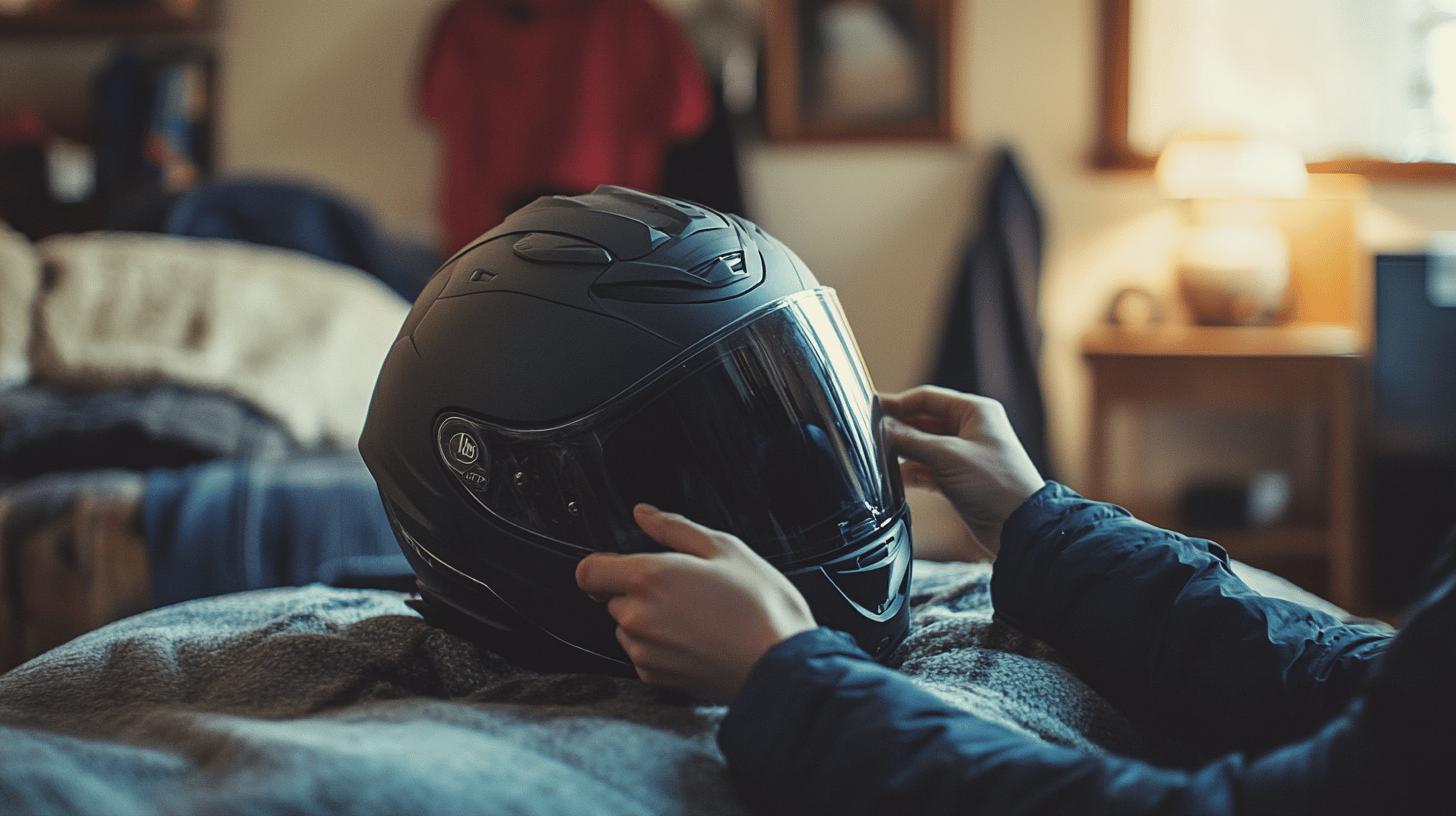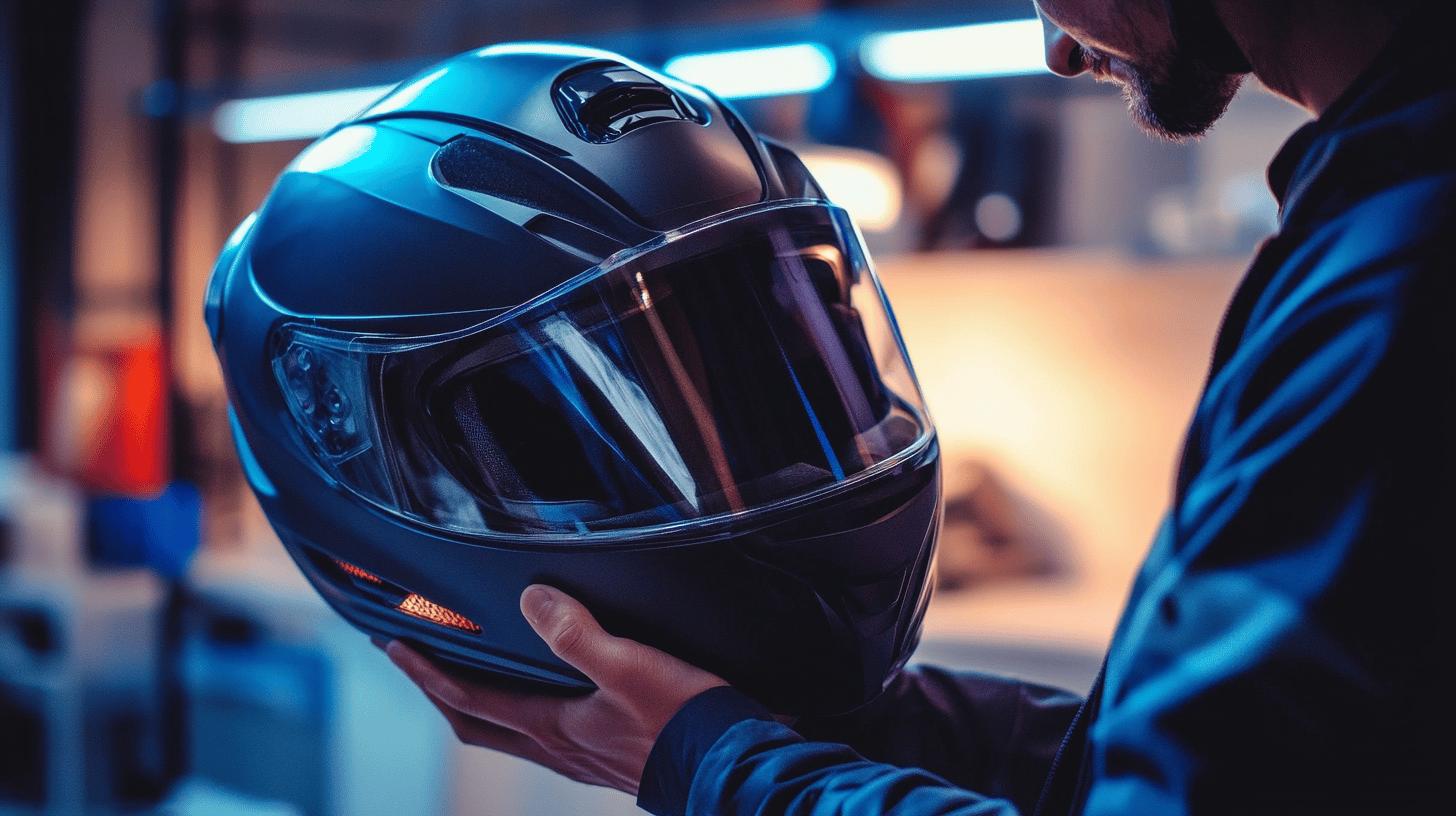Is your motorcycle helmet more of a headache than a haven? A well-fitting helmet is crucial not just for comfort, but for your safety on the road.
An improperly fitting helmet can cause more than just discomfort—it can actually decrease a rider's protection level. This guide will walk you through understanding the basics of helmet fit, providing insights into sizing, adjustments, and modifications.
Whether you're dealing with pressure points or looking to enhance your riding experience, investing a little time in getting that perfect helmet fit will undoubtedly pay off in the long run.
Understanding Helmet Fit: The Basics

A snug helmet fit is paramount for ensuring both safety and comfort while riding. A properly fitting helmet protects the head from impact by staying securely in place, distributing force evenly across the surface, and minimizing the risk of injury.
An ill-fitting helmet, on the other hand, can compromise safety by shifting during a crash, potentially exposing the head to impact. Comfort is equally important, as discomfort can be distracting and lead to fatigue, reducing a rider's focus and reaction time. Thus, achieving the right balance between snugness and comfort is critical.
- Headaches or persistent pressure points.
- Restricted vision or pinching around the eyes.
- Red marks on the forehead after removing the helmet.
- Pain or discomfort around the ears.
- Excessive movement of the helmet when shaken.
To find the perfect helmet fit, start by measuring your head circumference using a flexible tape measure. Position the tape about an inch above the eyebrows and around the widest part of the head. Once you have this measurement, consult the sizing guidelines specific to the helmet brand and model you are considering, as sizes can vary.
This ensures that you select a helmet that conforms to your head shape, providing the snug fit necessary for both safety and comfort. Adjustments may be needed to accommodate different head shapes, so trying on multiple helmets before purchase is advisable.
Adjusting Helmet Padding for Comfort

Adjusting helmet padding is an effective way to address fit issues that can cause discomfort during rides. Why is adjusting padding important for helmet fit? Padding plays a crucial role in achieving a snug yet comfortable fit, ensuring that the helmet remains stable on the rider's head. Over time, padding can compress, altering the fit and necessitating adjustments.
By customizing the padding, riders can alleviate pressure points, eliminate discomfort around the ears or forehead, and reduce helmet movement. This not only enhances comfort but also significantly improves safety by maintaining the helmet's position during a ride.
To adjust cheek pads and liners, first, identify areas where the helmet feels too tight or loose. Cheek pads should be snug without being overly tight. Many helmets feature removable cheek pads, which can be replaced with thicker or thinner options to fine-tune the fit.
Liners can also be adjusted by using padding inserts or replacement liners designed to better match head shape and size. These modifications help distribute pressure evenly across the head, providing a more secure and comfortable fit. Remember, adjustments should never compromise the helmet's protective capabilities.
Safety standards, such as DOT certification, are paramount when adjusting helmet padding. Why are safety standards crucial when modifying helmet padding? These certifications ensure that the helmet provides adequate protection in the event of an accident.
Any alterations to padding should be reversible and not affect the helmet's structural integrity. Always use manufacturer-approved padding solutions to maintain compliance with safety standards. Selecting helmets that offer adjustable padding features can help achieve both comfort and safety, allowing for necessary adjustments while adhering to protective guidelines.
| Helmet Type | Padding Features | Use |
|---|---|---|
| Full-Face | Removable cheek pads, adjustable liners | Maximum protection, long rides, track use |
| Open-Face | Basic padding, limited adjustability | Casual riding, urban environments |
| Modular | Swappable pads, customizable liners | Versatile use, touring, varying conditions |
| Dual-Sport | Enhanced ventilation, adjustable pads | Off-road and on-road versatility |
| Half Helmet | Minimal padding, comfort-focused | Short rides, warm climates, style preference |
Modifying Helmet Interior for a Better Fit

Is it safe to modify a helmet's interior on your own? No, personal modifications to a helmet's interior can compromise its safety features. Helmets are engineered to meet specific safety standards; altering their structure can weaken their protective capabilities. For instance, cutting or removing padding can lead to uneven pressure distribution, increasing the risk of injury during an impact.
Instead, it's advisable to seek professional help for fitting issues. Professionals can adjust helmets without compromising safety, often using manufacturer-approved methods and materials. These experts can alter or replace padding to suit individual head shapes while maintaining the helmet's structural integrity.
What are the benefits of a helmet's break-in period?
- Padding naturally conforms to your head shape over time, enhancing comfort.
- Initial tightness usually decreases, allowing for a more personalized fit.
- Reduces pressure points as the interior padding settles.
- Improves helmet stability as it molds to the rider's head contours.
Why are professional adjustments essential? Professional adjustments ensure that any modifications adhere to safety standards, preserving the helmet's protective function. While the break-in period can naturally improve fit, persistent discomfort should be addressed professionally. Ensuring the helmet fits correctly not only enhances comfort but also maximizes safety.
Professionals possess the tools and expertise to make precise alterations, such as swapping out padding for different densities or shapes, ensuring the helmet fits snugly without causing discomfort. This approach maintains the helmet's intended safety features, providing peace of mind during every ride.
Enhancing Helmet Comfort with Accessories

How can accessories improve helmet comfort? Accessories play a significant role in enhancing the riding experience by addressing specific comfort needs. For instance, adding padding kits can make a snug helmet fit more comfortably, while ventilation systems can enhance airflow, reducing heat build-up inside the helmet.
These additions not only increase comfort but can also contribute to a safer and more enjoyable ride by minimizing distractions caused by discomfort. Bluetooth compatibility and sun shields further enhance the experience by providing connectivity and protection from glare, ensuring that riders remain focused and comfortable throughout their journey.
- Padding kits for custom fit adjustments
- Ventilation systems to improve airflow
- Bluetooth systems for seamless connectivity
- Sun shields for glare reduction
- Noise reduction ear pads for quieter rides
Why is it important to maintain safety standards when adding accessories? Ensuring that any accessories added to a helmet are compatible and do not compromise its structural integrity is crucial. Accessories should be tested and approved for use with your specific helmet model, as improper additions can weaken protective capabilities.
By adhering to safety standards, riders can enjoy the benefits of enhanced comfort and functionality without sacrificing the essential protective features that helmets provide. Prioritizing safety while integrating comfort-enhancing accessories ensures a balanced and secure riding experience.
Troubleshooting Common Helmet Fit Problems

How can padding adjustments alleviate helmet fit issues? Adjusting padding can effectively address common discomfort issues, such as forehead pressure or ear discomfort, which often arise from a poorly fitting helmet. By identifying areas where the helmet exerts excessive pressure, riders can modify the padding to distribute force more evenly across the head.
This involves either adding additional padding in loose areas or replacing existing padding with thinner options where tightness is an issue. Ensuring the padding conforms to the head shape not only enhances comfort but also stabilizes the helmet, reducing movement during rides and enhancing overall safety.
How can a helmet roll-off test improve helmet fit evaluation? A helmet roll-off test is a crucial step in evaluating helmet security. To perform this test, the rider should fasten the helmet securely, then attempt to roll it off the head by pulling from the back.
If the helmet moves or detaches easily, it may be too loose or improperly fitted. This indicates the need for further adjustments, either through padding modifications or by considering a different helmet size or style. A helmet that remains stable during the roll-off test is likely to provide better protection in the event of an accident, keeping the rider's head secure.
- Inspect the helmet shell and liner for cracks or damage.
- Check the chin strap for wear and secure fastening.
- Re-evaluate head size annually, as weight changes affect fit.
- Test fit with usual hairstyle to avoid unexpected tightness.
Why should helmet fit issues be addressed promptly? Addressing helmet fit problems without delay is crucial for both safety and comfort. An improperly fitting helmet can become a significant distraction, leading to reduced concentration while riding, which increases the risk of accidents. Regularly evaluating fit and making necessary adjustments ensures the helmet's protective capabilities are not compromised.
By maintaining a secure and comfortable fit, riders can focus on the road, confident in their gear's ability to protect them. This proactive approach to helmet fit management is key to a safe and enjoyable riding experience.
Final Words
Ensuring your motorcycle helmet fits properly is crucial for both safety and comfort. Understanding the nuances of snug helmet fit, adjusting padding, considering professional guidance for interior modifications, and exploring comfort-enhancing accessories contributes significantly to an improved riding experience. Knowledge on how to make a motorcycle helmet fit better directly impacts your confidence and safety on the road. Addressing fit issues early helps prevent long-term discomfort and enhances overall helmet effectiveness. Embrace these techniques for a secure and comfortable riding journey.
FAQ
How to make a motorcycle helmet fit better?
A motorcycle helmet can fit better by adjusting padding, using helmet liners, or opting for a sizing kit. These methods improve comfort and ensure critical safety standards without compromising the helmet's integrity.
Is my motorcycle helmet too big?
If your helmet shifts when you move your head or has excessive space, it may be too big. The fit should be snug, without gaps, and should not move independently while riding.
How can I make my bike helmet fit better?
Adjusting the internal padding or using helmet inserts can make a bike helmet fit better. These adjustments help create a more personalized fit without compromising safety or comfort.
What is the 2-2-2 rule when fitting a helmet on your head?
The 2-2-2 rule aids proper helmet fitting: two fingers above the forehead, strap under the chin snugly fits two fingers, and the ear straps form a 'V' under each ear.
Is it better to size up or down in motorcycle helmets?
Size down if between sizes, since a snug fit enhances safety and comfort. Helmets should feel secure but not cause pressure points or excessive tightness that leads to discomfort.
How much should a motorcycle helmet squeeze your cheeks?
Cheek pads should apply gentle pressure without significant discomfort. They should allow for slight movement but avoid gaps for optimal protection and stability while riding.
What are some solutions for when a motorcycle helmet is tight on the forehead?
Relieve forehead tightness by adjusting forehead padding or selecting helmets with removable pads. Ensure pressure does not lead to discomfort or migraines, which signals an incorrect fit.

Ryan Thompson is a 35-year-old sport bike enthusiast known for his adventurous spirit. With years of weekend rides and exploring new roads, Ryan brings fresh insights and firsthand experience to ProtectiveGearz. His energetic approach and passion for the latest gear make him a trusted source for riders seeking up-to-date advice.



